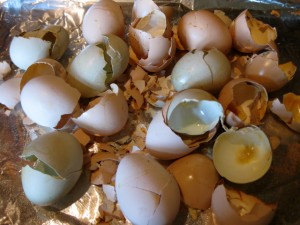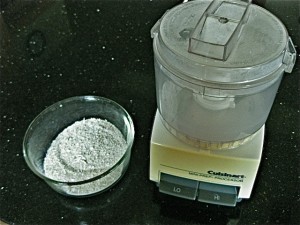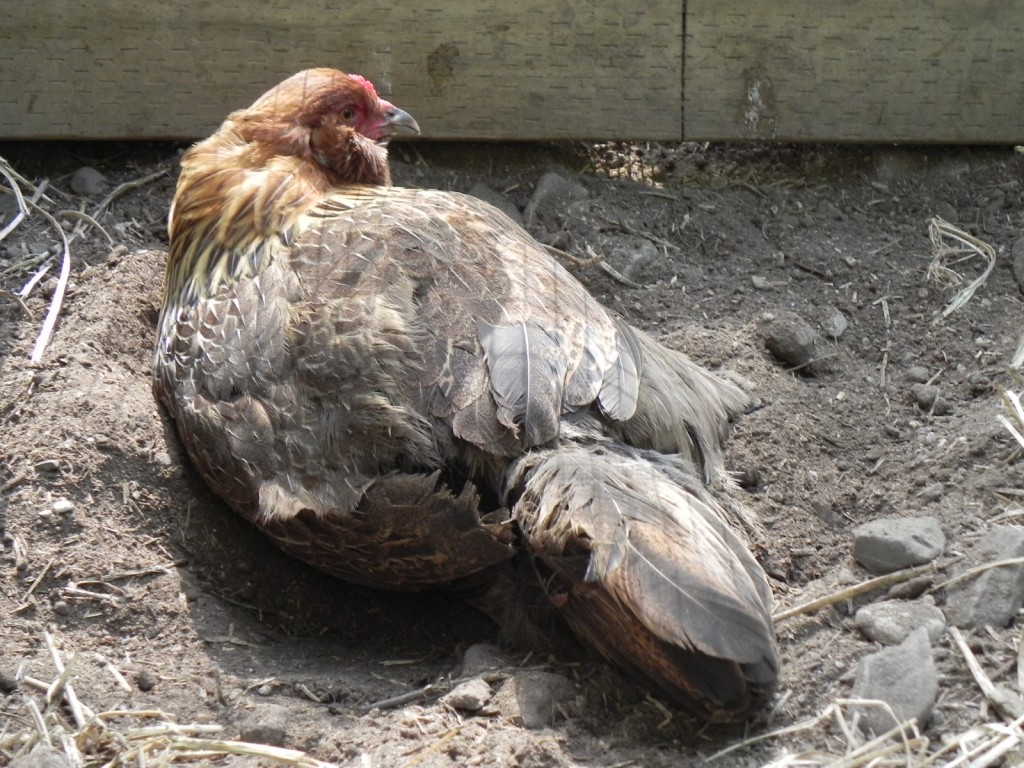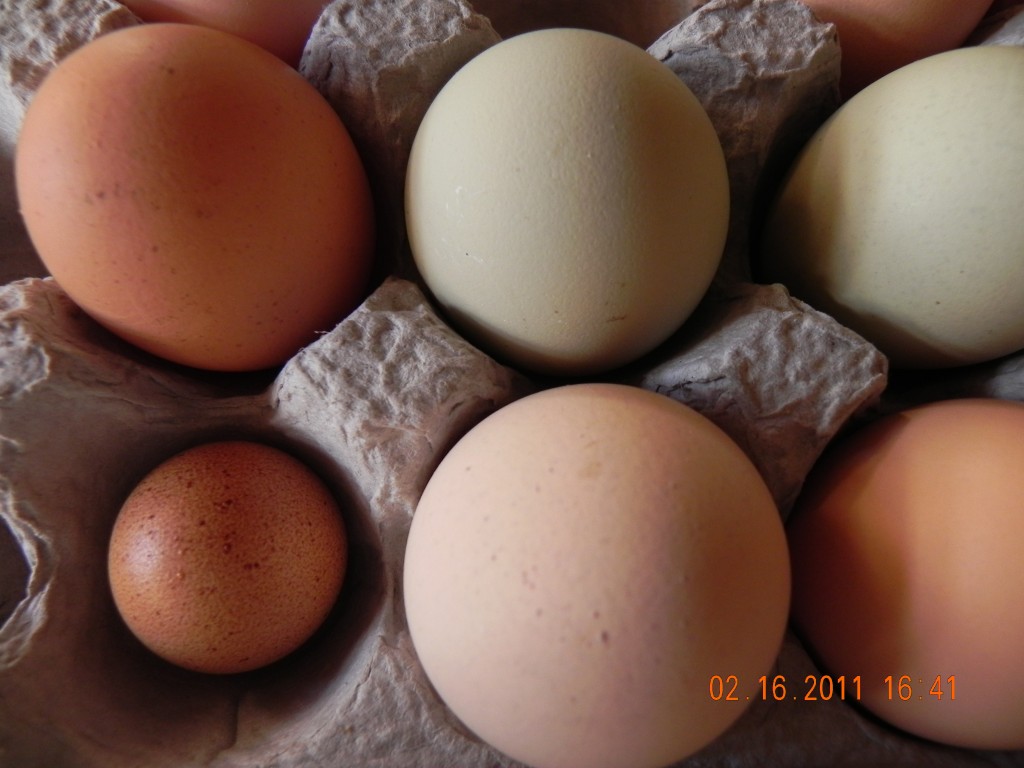When our sweet Buff Orpington, Daisy, was sick last summer, I was given some very practical advice by Brigitte Kessler-lichtensteiger, a chicken rancher in southern Ontario (and cousin-by-marriage to my niece). She suggested that I save and dry egg shells left over from cooking, grind or smash them, and feed them back to the hens. The extra calcium would strengthen their shells. I’ve been doing this every few weeks since August and I think it has made a difference. The shells of all the hens seem to be stronger and smoother.

After doing a little research, I found some material that supports Kessler-lechtensteiger’s theory here. “According to researchers at Mendel University, a hen must deposit 25 mg of calcium on the developing egg surface every 15 minutes during the 20-hour period in which the eggshell is formed. A prolific laying hen producing approximately 300 eggs per year will deposit 24 times more calcium into her eggs’ shells than the amount contained in her bones. With research like that, it is not a surprise that laying hens may need supplemental calcium even if they are being fed a nutritionally complete laying feed formula. Eggshells can provide that supplemental calcium.” I found this on eHow but is substantiated in other articles on the internet as well.
 I confess that I am of Scottish descent and it is hard for me to waste anything. I’ve been putting egg shells in my garden compost for years and have been feeding my six hens oyster shells to supplement their calcium intake. Now, in addition to the oyster shells, I air dry egg shells for about a week or put them in a warm oven for 1/2 an hour. I then put the broken shells in a little food processor and give them a whirl. After drying, the shells break down easily so this only takes a minute or two. When I fill the chicken feeder, I sprinkle this powder in with the feed, and mix.
I confess that I am of Scottish descent and it is hard for me to waste anything. I’ve been putting egg shells in my garden compost for years and have been feeding my six hens oyster shells to supplement their calcium intake. Now, in addition to the oyster shells, I air dry egg shells for about a week or put them in a warm oven for 1/2 an hour. I then put the broken shells in a little food processor and give them a whirl. After drying, the shells break down easily so this only takes a minute or two. When I fill the chicken feeder, I sprinkle this powder in with the feed, and mix.
With laying hens having to produce so much calcium each day, it only makes sense that food high in this essential mineral will enhance the hens’ ability to produce strong shells and keep the little darlings healthy.
.
.
.
.


I free-feed oyster shells that I buy from Farm Supply for the same reason. The girls have had it since they began laying and their eggs have always had strong shells.
Hi Lee,
I see from your message board that Daisy is molting. My hens are about 18 months old now and two of the four Buffs are in molt. I think the other two have gone thru molt without a drastic change. But these last two, it is scaring me. They look terrible, their eating habits have changed along with their personalities. No eggs since October 5th. Is this normal? How long does it last? Do hens molt every year?
Oh and how is Tillie?
Thank you for your informative essays.
Hi Maryann, It’s normal for the hens to molt every year or so, and yes it is scary. They look and act sick. Think how hard their bodies have to work to replace all those feathers. Our Sweetpea would not let us touch her for a month while she was molting. They say that as the feathers come in it is actually painful to be touched. Their combs shrivel and turn pink instead of red. Some hens take a month to molt while others take up to three months. Hang in there, your hens will be beautiful with all their new feathers.